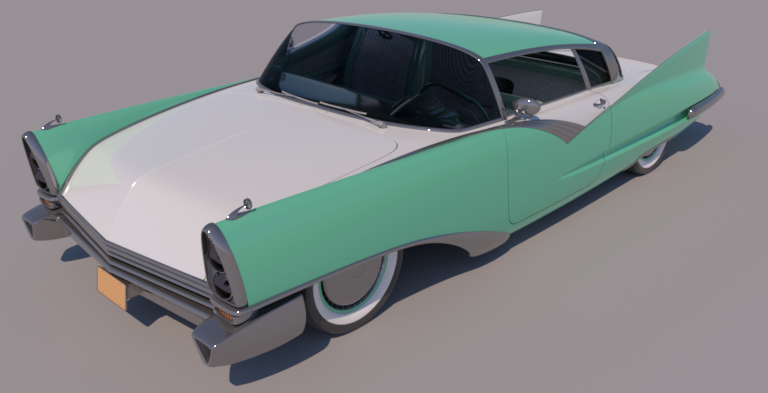
Pixar provides a free, non-commercial version of Renderman for Maya, and I’m very familiar with Maya, so my entire workflow for this project was based around good ol’ Maya. The first problem to tackle in this project was just getting Minecraft world data into a usable format. Our town is about 250 blocks long the entire server map is a 6000 block by 6000 block square. The vast majority of the town was built by two players over the course of about 4 months. …and here is a zoomed in view of the part of the map that contains our town. Here is an overview of the map revision I wanted to pull data from:
#RENDERMAN 21 DOCUMENTATION DOWNLOAD#
Fortunately, all previous Nerd.nu map revisions are available for download in the server archives (the specific map I used is labeled pve-rev17).

Every couple of months, the server is reset with a fresh map I wanted to render a town that fellow player Avi_Dangerstein and I built on the previous map revision. I’ve been playing on the Nerd.nu PvE (Player versus Environment) server for years and years now, and players have built a mind-boggling number of amazing detailed creations. The Minecraft data for this project comes from the Nerd.nu community Minecraft server, which is run by a collective of players for free. This project was a fun way to try the newest version of RIS on my own! Since joining the Hyperion team, I’ve had the chance to meet and talk to various (really smart!) folks on the Renderman team since they are a sister team to us, but I haven’t actually had time to try the new versions of RIS. Since then though, the Renderman team has followed up PRman 19 with versions 20 and 21, which introduced a number of new features and speed/stability improvements to RIS. I tinkered with the PRman 19 beta quite a lot at Cornell, and being an early beta, RIS had some bugs and incomplete bits back then. At Cornell’s Program of Computer Graphics, Pixar was kind enough to provide us with access to the Renderman 19 beta program, which included the first version of RIS. I thought that I would use the project as a chance to give RIS a spin. There are a lot of great Minecraft rendering tools available these days ( Chunky comes to mind), but I wanted much more production-like control over the look of the render, so I decided to do everything using a normal CG production workflow instead of a prebuilt dedicated Minecraft rendering tool. Recently, I wanted to try rendering a Minecraft world from a Minecraft server that I play on. In fact, while RIS is marketed as a new mode in PRman, RIS is actually a completely new renderer written almost completely from scratch it just happens to be able to read Renderman RIB files as input. That approach worked well and produced beautiful images, but it was also really complicated and had a number of drawbacks! RIS replaces all of that with a brand new, pure pathtracing system. At the time of Monsters University, PRman was actually a kind of hybrid rasterizer and raytracer the rendering system on Monsters University used raytracing to build a multiresolution radiosity cache that was then used for calculating GI contributions in the shading part of REYES rasterization.

Over time though, PRman has gained a whole bunch of added on features.

PRman was one of the first production renderers ever developed, and historically PRman has always been a REYES-style rasterization renderer.

As usual, before we dive into the post, here is the final image I made, rendered using Pixar’s Photorealistic Renderman 20 in RIS mode:Ībout two years ago, Pixar’s Photorealistic Renderman got a new rendering mode called RIS. I usually don’t write about my art projects that much anymore, but this project was particularly fun and produced some nice looking images, so I thought I’d write it up. Finally, there are a lot of really smart people working on all of the major production renderers out there, and seeing the cool things everyone is doing is fun and interesting! Because of all of these reasons, I like putting some time aside every once in a while to tinker with other renderers. I also think that knowing how a variety of different renderers work and how they are used is important a lot of artists are used to using several different renderers, and each renderer has its own vocabulary and tried and true workflows and whatnot. However, I think having experience using renderers as an artist is an important part of knowing what to focus on as a renderer developer. The vast majority of my computer graphics time is spent developing renderers (Disney’s Hyperion renderer as a professional, Takua Renderer as a hobbyist). Rendering Minecraft in Renderman/RIS July 22, 2016


 0 kommentar(er)
0 kommentar(er)
